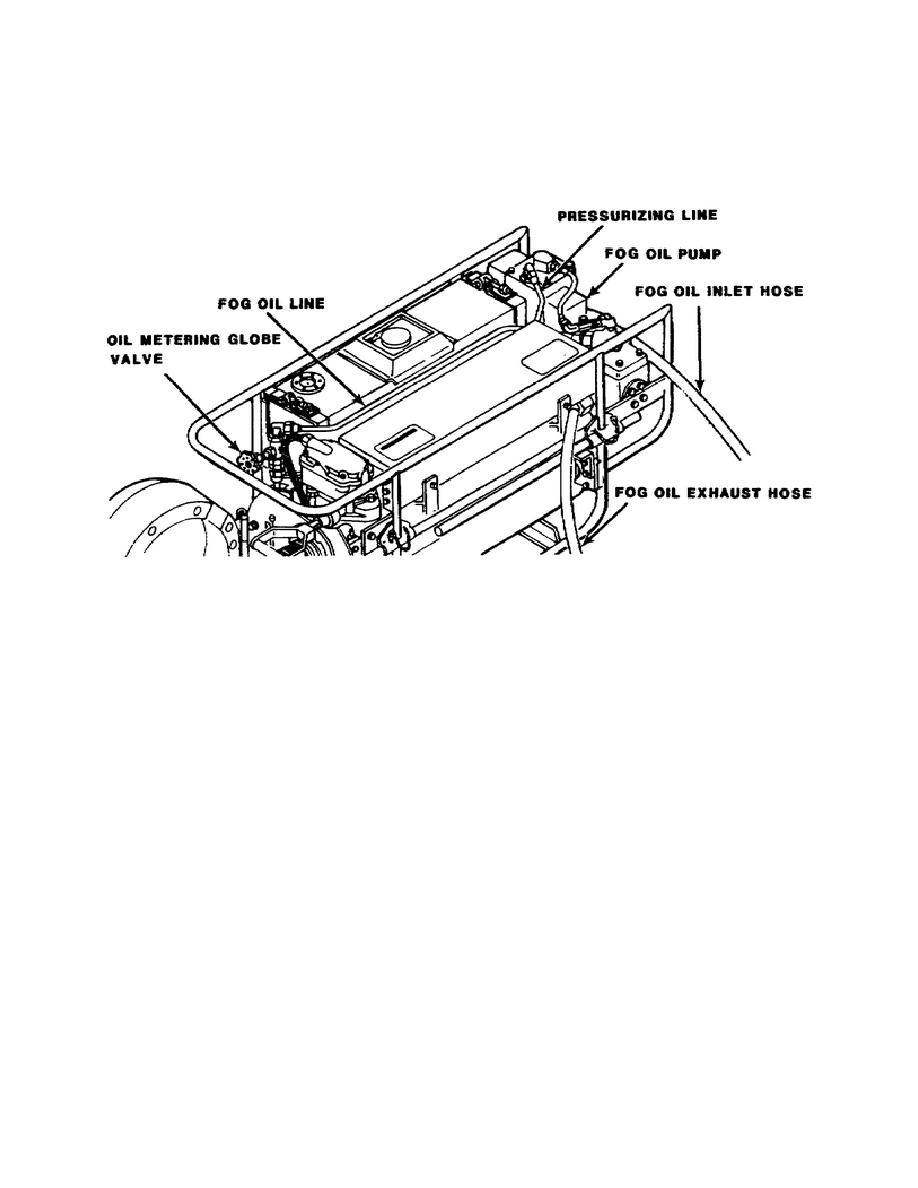
The position of the float bowl in relation to the flowjector of the pulse jet engine is important. If it
is too high, too much fuel will flow. If it is too low, not enough fuel will flow.
The fog oil system (Figure 5) consists of a fog oil inlet hose, a fog oil line, an oil metering globe
valve, a pressurizing line, a fog oil exhaust hose, and a fog oil pump.
Figure 5. Fog oil system.
The fog oil inlet hose is placed in the fog oil drum. The exhaust hose, also placed in the fog oil
drum, is the return line for excess fog oil that has been used to lubricate the air motor of the fog oil
pump. Fog oil is drawn from the drum and pumped through the fog oil line to the engine tube of the
generator. Hot exhaust gases from the pulse jet engine vaporize the fog oil and push it out into the
atmosphere. Upon contacting the atmosphere, the fog oil cools to form billowy white smoke. The flow
of fog oil is controlled by the fog oil globe valve. The fog oil pump consists of an air motor and oil
pump. The fog oil pump delivers fog oil to the pulse jet engine. The pump assembly is mounted above
the smoke outlet nozzles of the outer discharge baffle. The main parts of the air motor are the cylinder,
the piston, and pressure-inlet valve. The main parts of the oil pump are the oil cylinder, the piston rod,
and the outlet valve. Relief valves are provided to drain excess lubricating oil from the air cylinder.
The starting system (Figure 6) consists of an ignition system and a starting air system. The
ignition system consists of a magneto air pump assembly, a spark igniter, and a shielded ignition cable.
The ignition system provides the electrical spark necessary to start the engine. The starting air system
consists of an air pump, an air accumulator, pressure gage, air release button, and an air hose. The air
pump is a hand-operated plunger-type with the handle at the front end of the smoke generator. Pumping
the handle on the air pump assembly pressurizes the air accumulator assembly. The amount of air
12



 Previous Page
Previous Page
